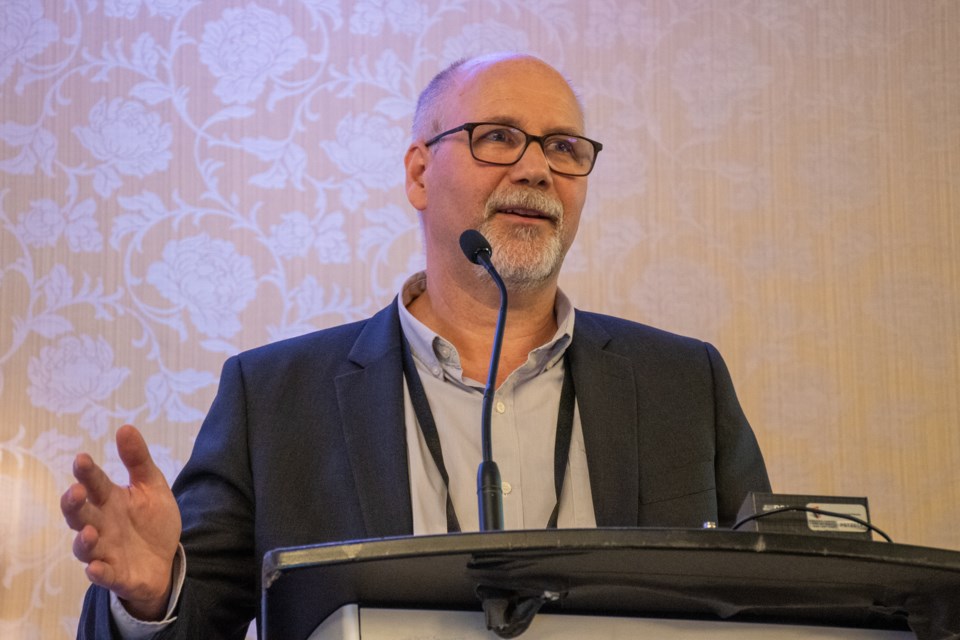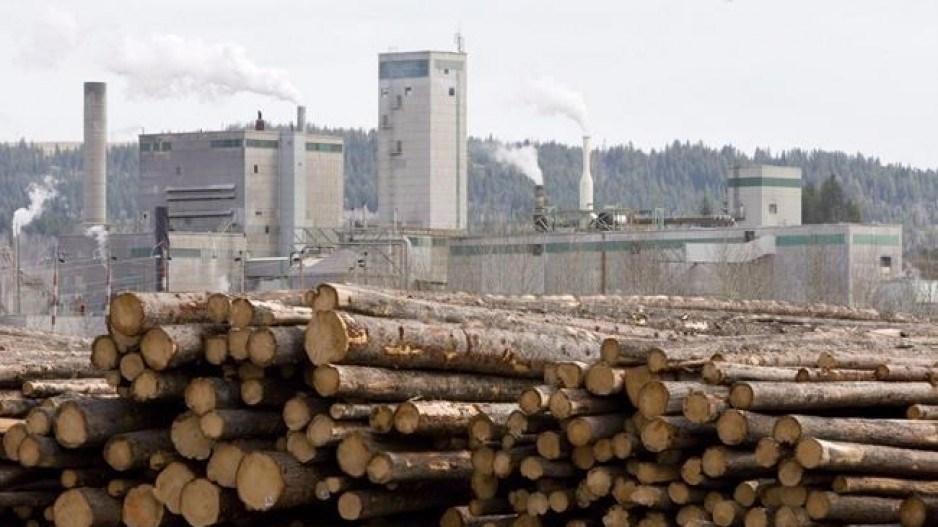With North American lumber prices below break-even costs for many sawmills in Canada and the U.S., plus ongoing geopolitical uncertainty, recessionary conditions in China and declining timber supplies around the world, the global outlook for the forestry industry is not particularly rosy.
In British Columbia, once North America’s forest-sector powerhouse, it seems downright dismal. And low lumber prices—a result of inflation and high interest rates squelching North American homebuilding—are only one of a myriad of challenges facing the industry.
According to Natural Resources Canada, the average price for Western SPF (spruce-pine-fir) was below US$400 per thousand board feet—a quarter of the record-high US$1,600 per thousand board feet seen in 2021.
“Through the first two weeks of July, prices have continued to move lower where almost all ‘average’ or typical sawmills in North America are at or below break-even costs,” Global Consulting Alliance noted in a recent quarterly outlook, which does offer a glimmer of hope that lumber prices have reached their bottom.
“North American lumber prices bottomed in July and have since been steadily increasing. While weak sawmilling margins are still evident in North America, the market tone is finally changing and sawmills in the U.S. south are making good margins while mills in B.C. and the U.S. Pacific Northwest are getting closer to break-even levels.”
The outlook says Canada’s lumber output was 4.4 per cent higher in the first seven months of 2024 compared with 2023, but that B.C.’s output was lower by 2.8 per cent.
A shrinking timber supply has turned B.C. into a high-cost jurisdiction. There have been more than a dozen sawmill and pulp mill closures in the past four years, and a flight of capital to the U.S., where B.C. forestry giants such as Canfor (TSX:CFP) and West Fraser Timber (TSX:WFG) now own as many, if not more, sawmills than they do in Canada.
While the pine beetle infestation that devastated B.C. forests two decades ago is partly responsible for B.C.’s shrinking fibre supply, both federal and provincial government regulations have also eaten into the available timber supply in Canada, and especially in B.C., according to Rob Schuetz, president of Industrial Forest Services, who spoke at last week’s Global Wood Summit organized by Russ Taylor Global and ERA Forest Products Research.

In short, B.C. has an allowable annual cut that is increasingly not allowed to be cut.
In the 1990s, B.C. was harvesting 95 per cent of the province’s annual allowable cut (AAC), Schuetz said. In the 2000s, that fell to 80 per cent, partly because of the 2008-09 financial crisis in the U.S. that caused a housing market collapse.
Since the BC NDP came to power in 2017, the percentage of the AAC that is actually cut has fallen below 50 per cent, Schuetz said.
“The last few years, since the NDP came in and they started this more aggressive approach to reconciliation, and the different initiatives get to support that, we’ve harvested about 47 per cent of the annual cut, irrespective of the fact that lumber was US$1,600 (per thousand board feet) in the 2021 period,” Schuetz said. “We couldn’t recover with respect to our harvesting, for various reasons.”
Those “various reasons” include a stack of new policies and regulations: Old growth harvesting moratoria, new forest landscape plans, ecosystem-based land management, increasing parks and protected areas, shared land-use decision-making with First Nations, and federal and provincial caribou habitat protection plans.
Since 2020, 16 sawmills, three pulp mills and four paper mills have closed in B.C., Schuetz said.
The federal government’s caribou habitat protection regulations under the Species at Risk Act (SARA) has impacted the fibre supply across the country, he said. B.C.’s caribou recovery plan, as per SARA, led to a planned expansion of the Klinse-za provincial park, Schuetz said, which led Canfor to pre-emptively shut down a sawmill in Chetwynd.
“Canfor shut down their Chetwynd facility a couple years ago simply because they knew that the writing was on the wall for their fibre supply because of caribou habitat,” Schuetz said. “It took a couple of more years for the park to be put into place, but the writing is on the wall for a lot of sawmills across Canada.”
Even if lumber prices recover, Schuetz suggested B.C. producers will be in no position to capitalize on them.
“Even in a good market … there won’t be a real recovery in B.C. towards the AAC and towards our ability to respond to an increase in lumber prices, simply because of either economics or a few other issues,” he said.
For more than a decade now, B.C. forestry companies have been investing in the U.S. This is, in part, a hedge against the softwood lumber duties applied to Canadian lumber imports.
But the U.S. also has a growing fibre basket, thanks in part to the fact that species like southern yellow pine have shorter rotation periods of 20 to 30 years, compared to rotations of 60 to 80 years for species grown in B.C.—lodgepole pine and Douglas fir, for example.
The great recession of the late 2000s also had a major impact lumber demand, resulting in a build-up of fibre inventory. Additionally, U.S. timberlands are mostly privately owned tree plantations, and do not face the same encumbrances as B.C. public lands.
Amanda Lang, COO of the U.S. forestry consulting firm Forisk Consulting, said the growth-to-drain ratio in the U.S. south is now 1.4.
“That means the forest is growing 40 per cent more volume than we’re harvesting, which means the timber supply is growing at 40 per cent above harvesting levels,” Lang said.
“That timber resource really increased after the great recession. We’re actually forecasting more of an increase into 2033 and 2035 for the region.”




